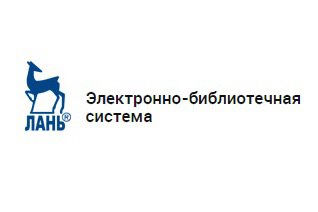Malinovskii E. G., Akhpashev B. A., Golovanov A. I., Gildeev A. M. Comparing the results of physical modeling and full-scale experiment on ore face draw in the system of block caving for flat deposits. Izvestiya vysshikh uchebnykh zavedenii. Gornyi zhurnal = News of the Higher Institutions. Mining Journal. 2019; 7: 34–44 (In Russ.). DOI: 10.21440/0536-1028-2019-7-34-44
Introduction. The task of ore and host rock caving method effective parameters determination in the conditions of thick flat deposits is by no means trivial due to a lack of adequate international and local experience. Optimal parameters of ore draw are therefore best determined based on physical and mathematical modeling, taking into account the data of full-scale experiments.
Research aim. Based on physical and mathematical modeling and full-scale experiment data, the present research aims to identify the patterns of rock mass draw in the context of particular mining and geological conditions of a deposit. Using the obtained data on discharge figures formation kinematics, the research aims to determine the medium flowability indicators required to create a mathematical model of ore draw in similar conditions. Research methodology includes physical modeling of the ore face draw with of the medium extraction and flowability indicators determination.
Results. Comparison of full-scale experiments results with physical modeling results revealed sufficient convergence in the areas of losses and dilution, in the similarity of broken rock draw patterns, in the draw figure formation. Base on physical modeling, the dependence between the medium flowability indicator and the discharge figure height required to mathematically simulate the draw.
Summary. The medium flowability characteristics, defined during physical modeling and full-scale experiments and incorporated in the mathematical model of draw, will allow to optimize the parameters of the development systems with ore and host rocks caving at thick flat deposits.
Key words: flat deposits; system of development; block-caving; face draw; physical modeling; full-scale experiment.
REFERENCES
1. Imenitov V. R., Kovalev I. A., Uralov V. S. Modeling ore caving and discharge. Moscow: MSU Publishing; 1961. (In Russ.) 2. Malakhov G. M., Bezukh R. V., Petrenko P. D. Theory and practice of ore discharge. Moscow: Nedra Publishing; 1968. (In Russ.) 3. Kulikov V. V. Ore discharge. Moscow: Nedra Publishing; 1980. (In Russ.) 4. Kabelko S. G., Dunaev V. A., Gerasimov A. V. Computer technology of forecast evaluation of ore drawing indicators at the development of deposits by systems with ore and rock caving. Izvestiya vysshikh uchebnykh zavedenii. Gornyi zhurnal = News of the Higher Institutions. Mining Journal. 2014; 8: 54–61. (In Russ.) 5. Bashkov V. I. Parameters analysis and design of the variant of sublevel caving development with face draw of the ore. Vestnik Kuzbasskogo gosudarstvennogo tekhnicheskogo universiteta = Bulletin of the Kuzbass State Technical University. 2015; 2 (108): 75–78. (In Russ.) 6. Savich I. N., Mustafin V. I. Perspectives of use and rationale design solutions of block (level) and sublevel face draw. Gornyi informatsionno-analiticheskii biulleten (nauchno-tekhnicheskii zhurnal) = Mining Informational and Analytical Bulletin (scientific and technical journal). 2015; S1: 419–429. (In Russ.) 7. Golik V. I., Belodedov A. A., Logachev A. V., Shurygin D. N. Improvement of parameters of production of ores at the subfloor collapse with face release. Izvestiia Tulskogo gosudarstvennogo universiteta. Nauki o zemle = Proceedings of the Tula State University. Earth Sciences. 2018; 1: 150–159. (In Russ.) 8. Ermakova I. A. Setting of flow parameters during release of ore in caving systems. Tekhnika i tekhnologiia gornogo dela = Journal of Mining and Geotechnical Engineering. 2018; 1: 4–11. (In Russ.) 9. Kvapil R. Gravity flow of granular material in hoppers and bins. Part 1. International Journal of Rock Mechanics and Mining Sciences. 1965; 2: 35–41. 10. Marano G. The interaction between adjoining draw points in free flowing materials and its application to mining. Chamber of Mines Journal. Zimbabwe. 1980; 25–32. 11. Laubscher D. H. Cave mining – the state of the art. The Journal of the South African Institute of Mining and Metallurgy. 1994; 94 (10): 279–293. 12. Rustan A. Gravity flow of broken rock – what is known and unknown. In: Proceedings MassMin 2000, Brisbane. P. 557–567. Ed. G. Chitombo. The AusIMM, Melbourne. 2000. 13. Power G. R. Modeling granular flow in caving mines: large scale physical modeling and full scale experiments. PhD thesis. The University of Queensland, Brisbane. 2004. 14. Malofeev D. E. Developing the theory of ore draw under the caved rock: monograph. Krasnoyarsk: SFU Publishing; 2007. (In Russ.)
Received 9 July 2019









